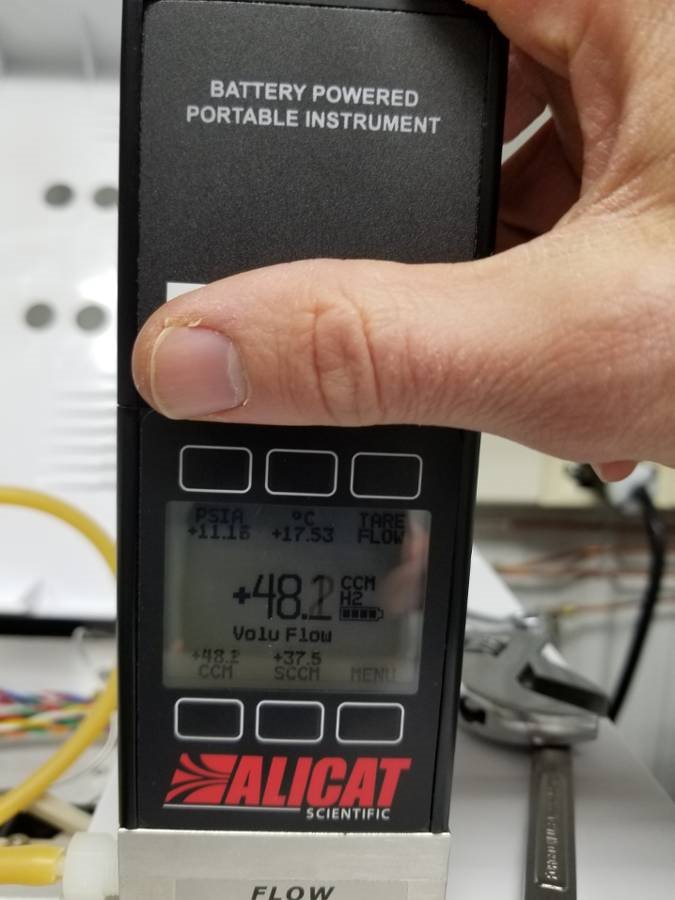Our laboratory operates at an altitude well in excess of 2000 meters above sea level.
While standard pressure at sea level is ~14 PSI. Our pressure is ~11.2 PSI. This is enough of a difference to affect the flow rates of the instruments.
When a volumetric flowmeter such as the ADM 1000 is used to measure flow, the flow reads approximatley 20% higher than the setpoint. A mass flowmeter reading matches the setpoint. This makes sense according to P1V1=P2V2 (at the same number of moles and temperature (mass flow), volume will change inversely to pressure).
This presents a problem when setting up FID setpoints or constant flow conditions, since the displayed setpoints are incorrect for the conditions. While we can manually make the adjustments, it makes training and troubleshooting more difficult than it needs to be.

